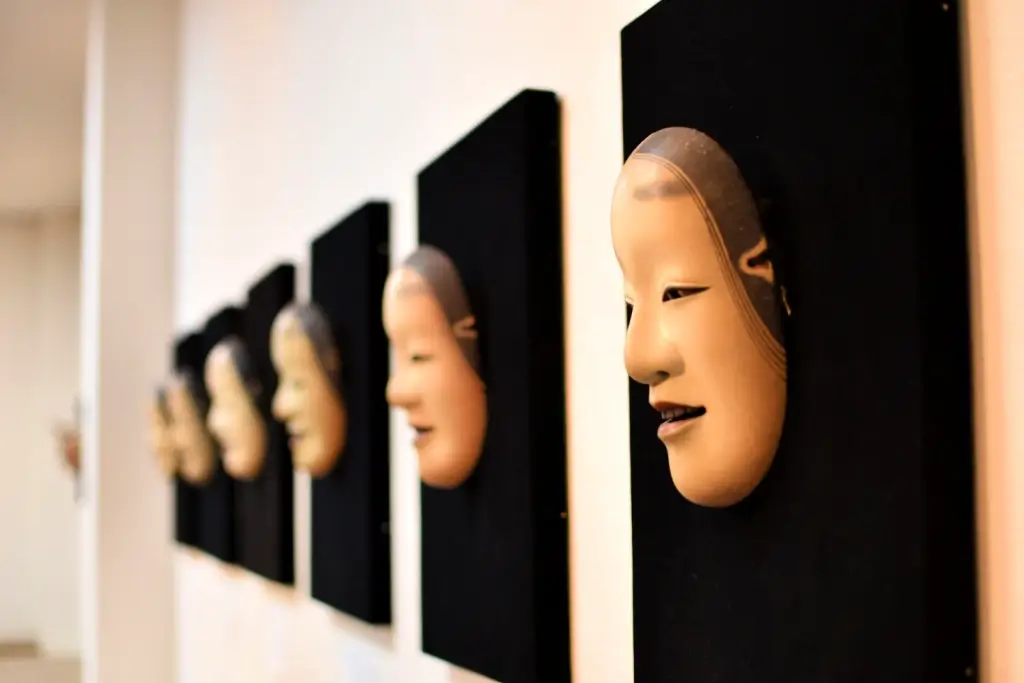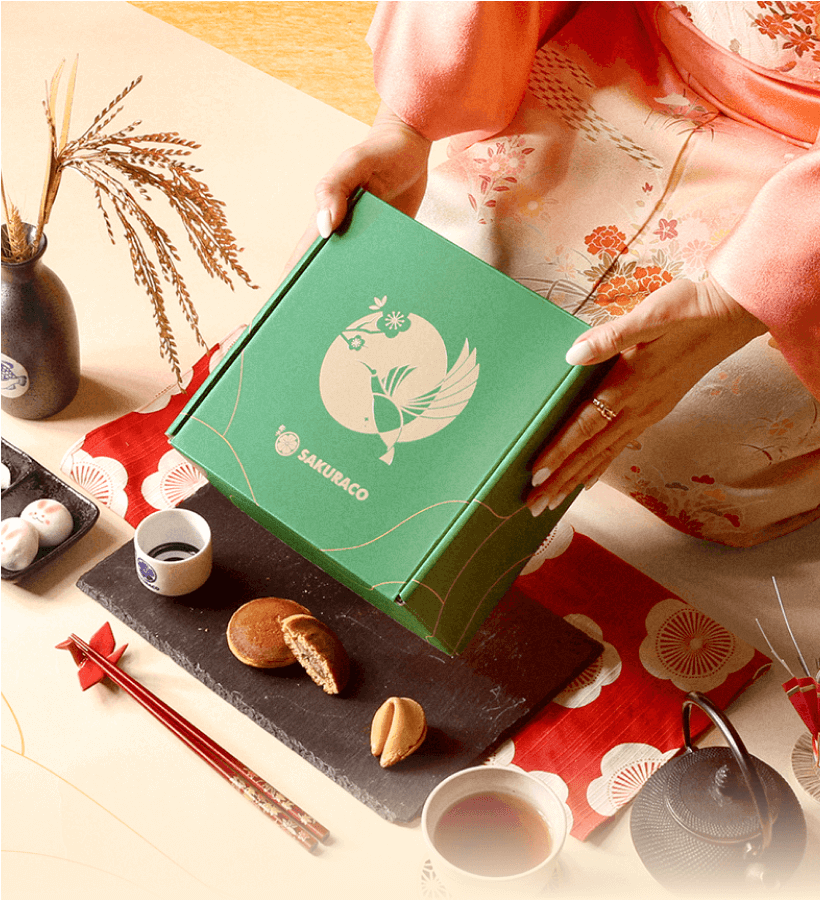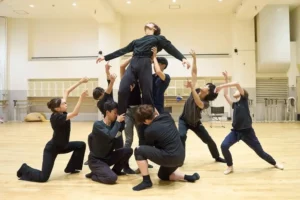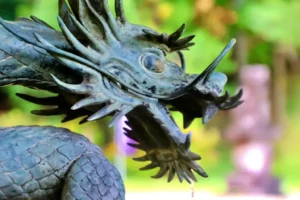Osaka is one of the largest and most vibrant cities in Japan. However, not only does the city’s modernity truly set it apart, but we must also recognize the rich traditions preserved through generations. Traditional arts and crafts have become Osaka’s defining feature and strength. Now, let’s explore a selection of the hidden gems of the city’s remarkable traditions, starting with the Noh theater!
Table of Contents
ToggleNoh theater
Noh is a traditional Japanese stage performance that has existed since the 14th century. It’s one of Japan’s oldest kinds of theater, and many still perform it today. Noh theater tells stories using slow, graceful dance, music, and beautiful poems. Actors wear detailed costumes and special masks that depict characters such as ghosts, gods, women, or even demons.
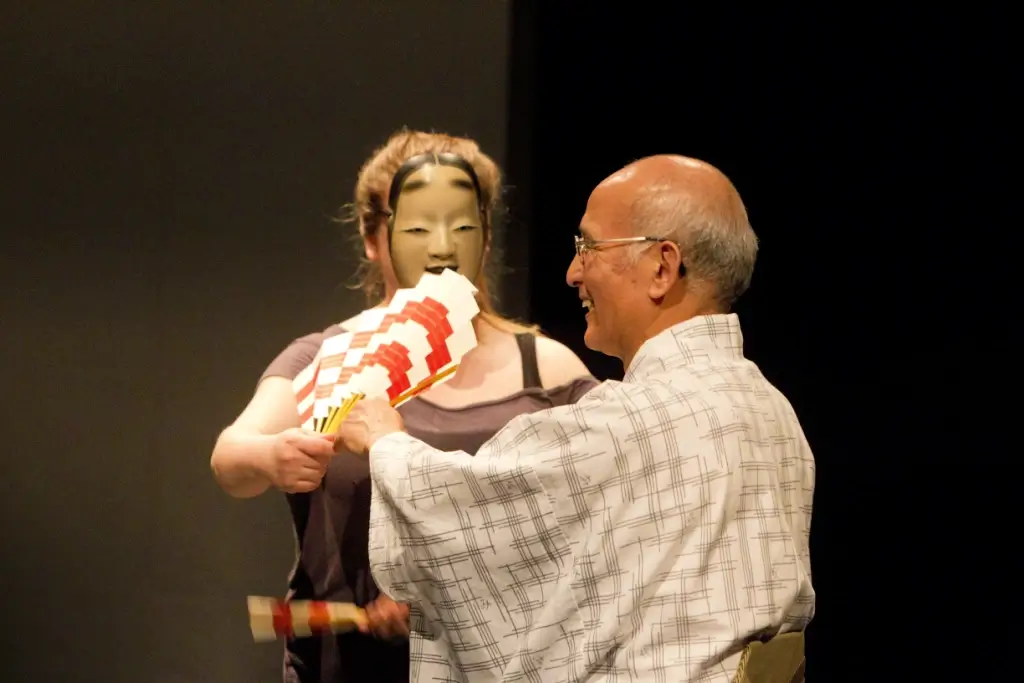
Instead of using many facial expressions, the actors move in unique ways to show their feelings. The stage is simple, just a wooden floor with a pine tree painted on the back wall. There are no flashy lights or big sets, so the audience uses their imagination as they listen to the music and watch the story unfold. It’s like watching a quiet and elegant dance filled with deep meaning!
In Osaka, you can enjoy noh at places like the Yamamoto Noh Theater, close to the famous Osaka Castle. This small and cozy theater was rebuilt in 1950 and even has soft floor cushions to sit on. Another great place is the Ohtsuki Noh Theater, built in 1935. It survived World War II and still puts on amazing performances.
Chusen
Chusen (pouring dye) is used to color fabrics like yukata (summer kimonos) and tenugui (Japanese hand towels). The fabric gets folded, and colorful dyes are poured through special patterns made by hand. It started in the 1600s, and people say it may have been developed in Osaka during the Meiji period (1868-1912).
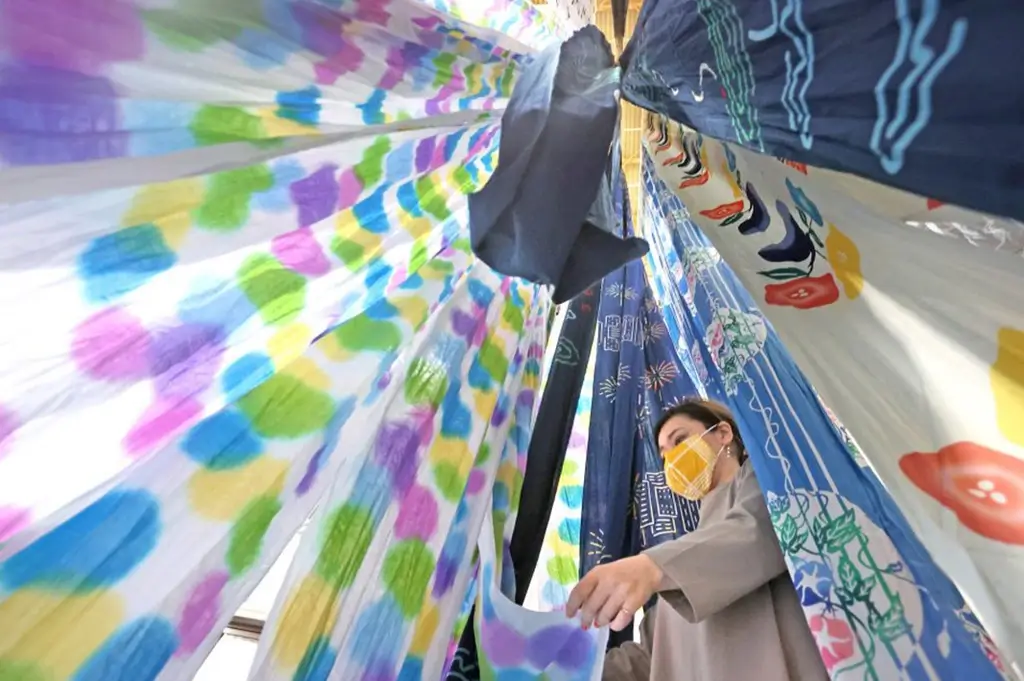
This art began in Sakai City, Osaka Prefecture. A river called the Ishizugawa runs through Sakai, which helped make this place perfect for cleaning and drying cotton in the sun. Sakai’s clean water and wide, sunny spaces made it the best place to bleach cotton.
You can find chusen-dyed items in places like Nakazakinishi in Osaka City, where shops sell hand towels, bags, and other lovely things made with this technique. They are great for souvenirs or presents. A well-known brand named Nijiyura makes colorful designs that mix old and new styles.
Sakai Knives
Sakai City is famous for its amazing knives. People have been making knives there for over 600 years! A long time ago, when the Portuguese came to trade, they brought tobacco, and the Japanese needed sharp knives to cut the leaves. Thus, blacksmiths in Sakai made specialty knives for the job, and they were so good that everyone wanted one! Over time, the knife-making skills got better and better.
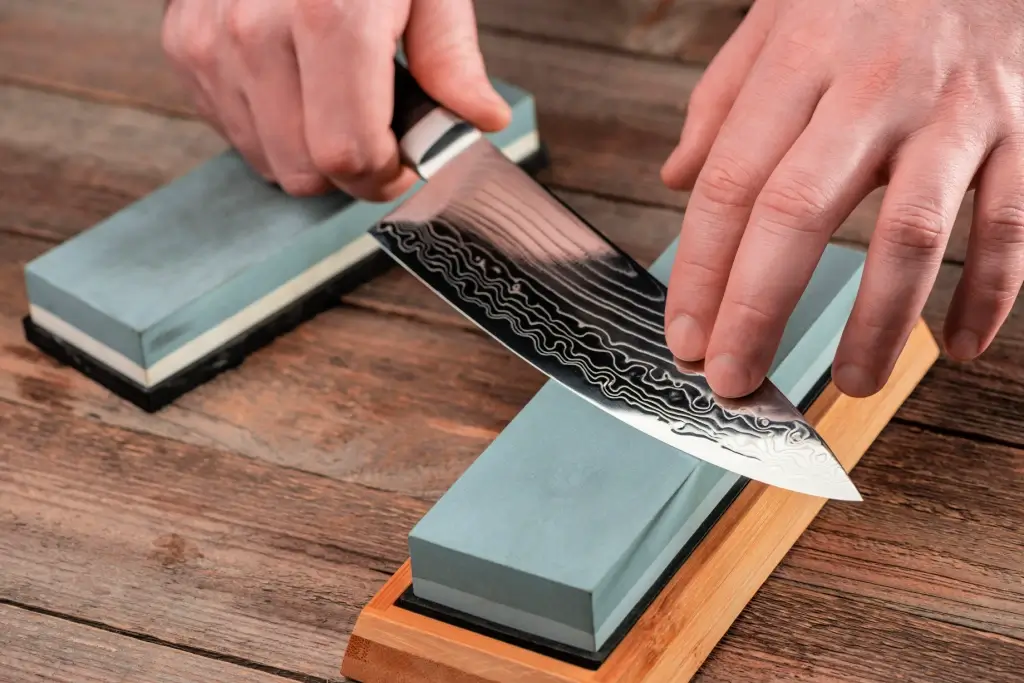
Skilled artisans craft Sakai knives by focusing on specific tasks such as forging the blade, shaping it, sharpening it, and making the handle. These craftsmen collaborate as a cohesive team to produce high-quality knives. They hammer the blades repeatedly to enhance their toughness and sharpness. Additionally, the single-edged design of these knives ensures clean cuts that maximize food flavor. Today, approximately 98% of professional chefs in Japan rely on Sakai knives for their culinary needs.
Are you looking for great snacks while enjoying traditional arts and culture? Check out Sakuraco! Sakuraco delivers traditional Japanese snacks, sweets, tableware, and more from local Japanese makers right to your door, perfect for a pleasant snack time at home!
Hariko
Hariko, or papier-mâché, was born more than 500 years ago! This fun art came from China, moved through Kyoto, and finally found its home in Osaka. Artists use soft washi (Japanese paper) and glue made from wheat flour to shape animals, people, and lucky dolls. They carefully layer the paper by hand to make cute and colorful toys and decorations.

Osaka hariko has many types. Some are tigers, which people believe help kids grow up strong. Others are round, smiling Daruma dolls, made to bring good luck and help with goals. You might see them in homes or shops as lucky charms.
Ranma
In the 1600s, beautiful wooden decorations called ranma began appearing in homes and temples in Osaka. At first, they were only found in big temples, including Shitennoji Temple. But soon, they became popular in the homes of merchants and ordinary people in Osaka, especially in places like Horie and Chuo, where wood was traded.
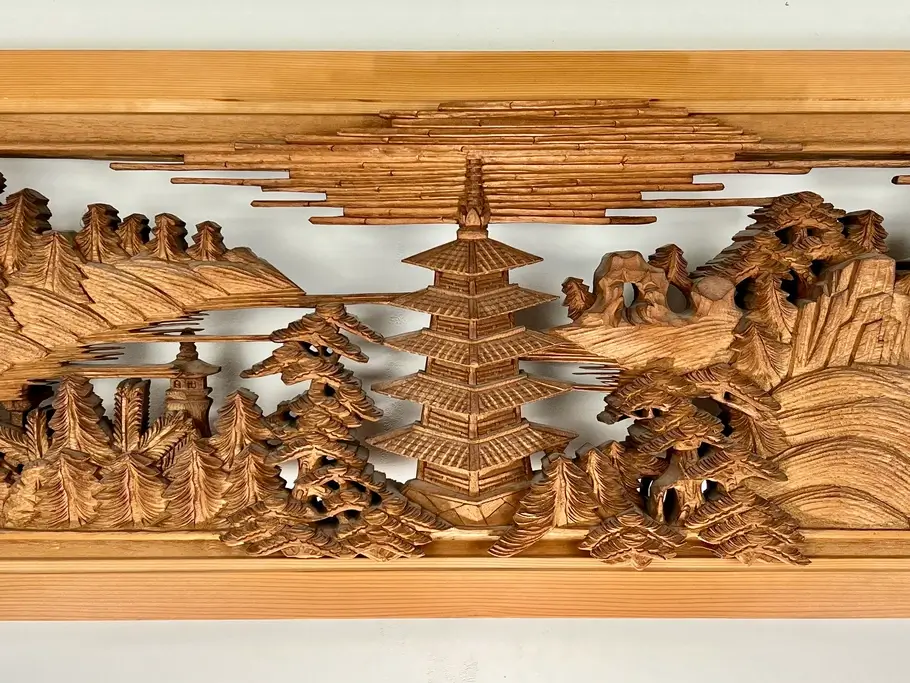
Osaka ranma comes in many amazing styles! Some feature pictures carved into wood, such as birds, flowers, or mountains, using cedar or paulownia wood. Others have shapes like stars and diamonds made by joining thin wood pieces. Some even look like bamboo fences!
These wooden pieces are handmade with great care and have been made the same way for over 400 years. Even today, some artists create new ranma decorations for modern homes. These charming woodworks bring light, air, and tradition into every room!
What makes Osaka arts and crafts unique?
What makes Osaka’s arts and crafts stand out isn’t just their long history or stunning designs; it’s the spirit behind them. These crafts connect the past to the present in quiet and powerful ways. Each piece, whether it’s a graceful noh theater mask or a finely forged Sakai knife, reflects the deep dedication of the artists and craftsmen who keep these traditions alive.
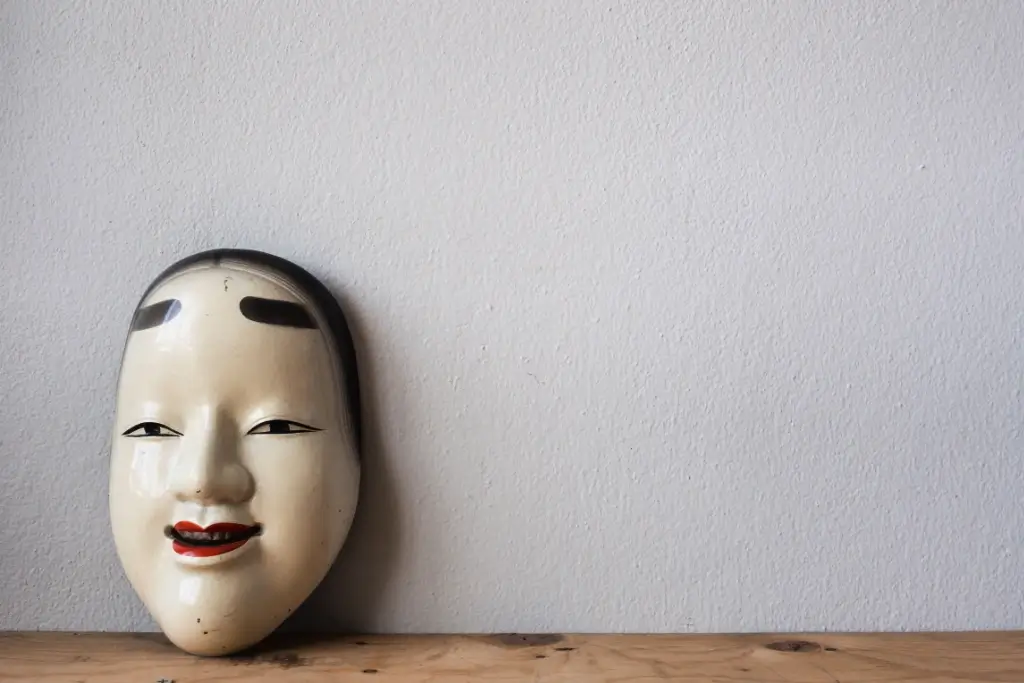
Their skilled hands and creative minds turn everyday objects into works of cultural meaning. Through quiet patience and years of practice, they protect not only the identity of Osaka but also the soul of Japan’s heritage. What part of traditional art and craft inspires you the most? Share your thoughts with us in the comments!

